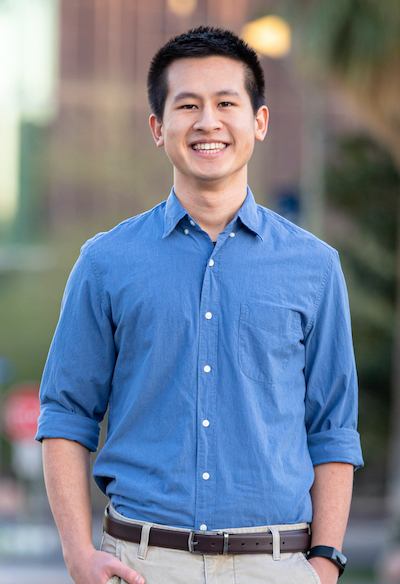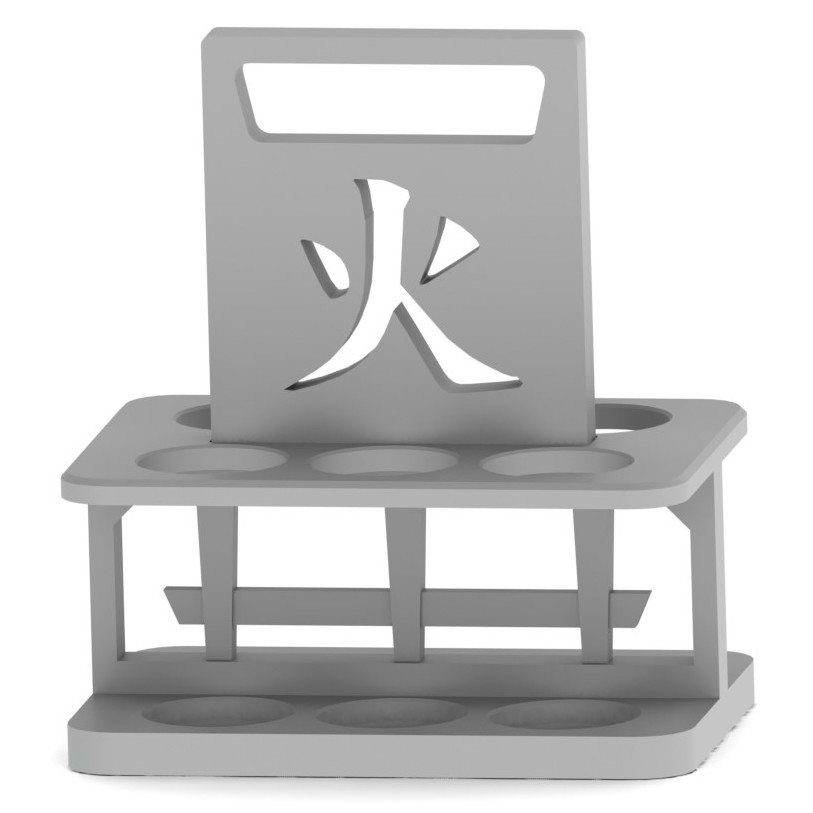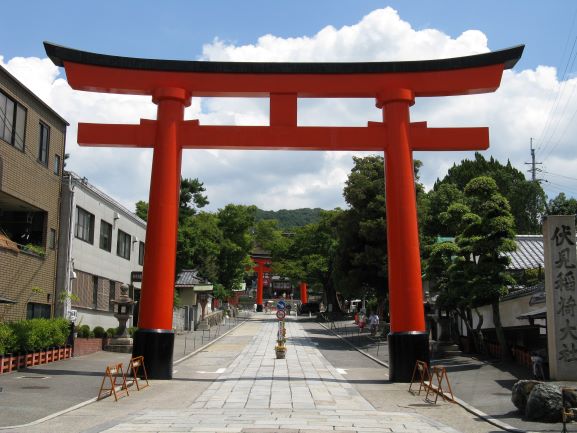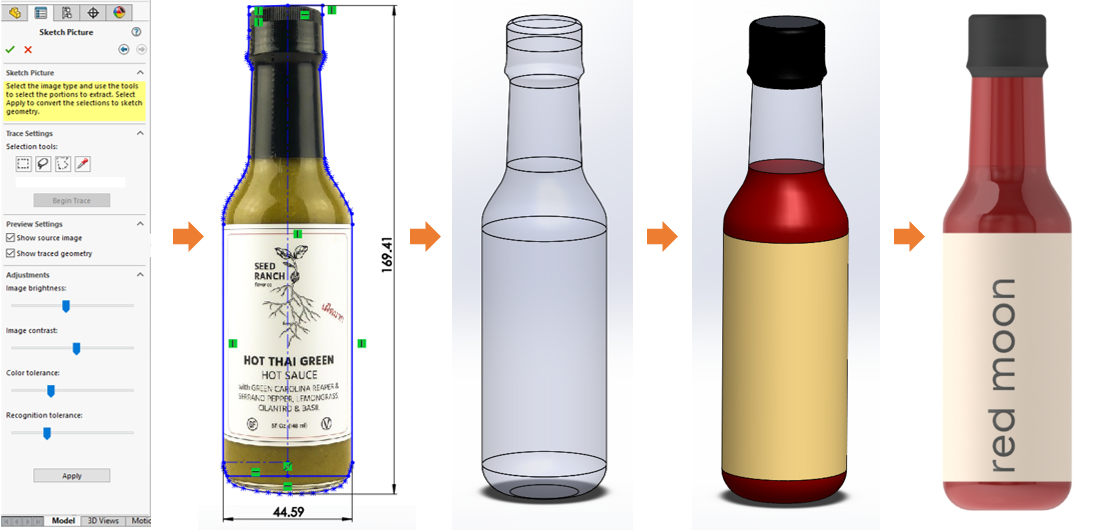
Henry Quach
Mechanical EngineerShinto Hot Sauce Tote
I designed a tote to organize my collection of hot sauces. Several exist on Thingiverse, but I wanted one of my own.

Design Elements
My primary design intent was to imply a device specifically meant to carry hot sauces. Imagery of flames, dragons, and peppers were attractive, but it was difficult to work any of them into a non-cheesy design with more than a single pictorial motif. Ultimately, I chose to incorporate the artistic elements of a Shinto temple. My dominant motif was the Japanese kanji for 'fire', and the angularity of the beams is akin to that of Torii gates. A full Torii arch has yet to be worked in, but that'll be for the next iteration.

P/C: Hushimi inari tasha,Wikipedia Commons
| Design | Feature Descriptions |
|---|---|
| Functional |
♦ Carries six standard 5-oz hot sauce bottles ♦ Low slop in individual bottle fit ♦ Minimal hardware (i.e. SHCS, pins) ♦ Sturdy enough to avoid permanent deformation from the weight of six glass bottles and their enclosed liquid |
| Ergonomic | ♦ Wider 4.5" handle for four finger grip ♦ Bottom-weighted base ♦ Chamfered bottle holes for the bottle for easier insertion and centering |
| Artistic | ♦ Japanese kanji for 'fire' as the primary motif ♦ Tapered beam to resemble the secondary beam of a Torii arch |
Single Bottle Modeling
While there is a standard size for 5-oz hot sauce bottles, I could not find the standard shape profile online (besides a single max bottle diameter and height). The most reliable choice would have been used to use calipers to take profiles along the axis of the bottle, but I wanted to see if I could do this using autotrace in a 2D sketch. I chose an image of a bottle that appeared fairly orthographic.

It actually traced pretty well - the width of the max diametrical profile was 44.59 mm (44.45 mm expected), and the height was traced to 169.41 mm (171 mm expected). So I ended up trusting the profile to develop my model for a bottle. Half of the trace was then used to revolve about the axis, prettified, and then rendered in Photoview. I chose to render with no bloom and tuned transparency for a more convincing glass appearance.

Exploded View
The assembly was modeled as two nests that cradle the bottles and a handle that unifies them. I chose to use three fasteners to connect the lower nest because it would be devasting if a snap fit failed. Some artistic flare was sacrificed so that the three piece could be printed as three 'planar' components.

Final Assembly
This is the final assembly! This page will be updated once 3D-printed parts are in hand and the bottles can be inserted.
